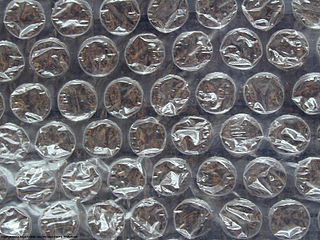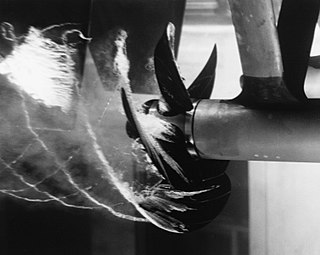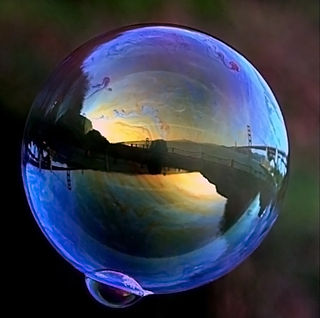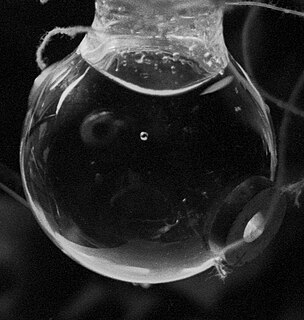 W
WA bubble is a globule of one substance in another, usually gas in a liquid. Due to the Marangoni effect, bubbles may remain intact when they reach the surface of the immersive substance.
 W
WAn antibubble is a droplet of liquid surrounded by a thin film of gas, as opposed to a gas bubble, which is a sphere of gas surrounded by a liquid. Antibubbles are formed when liquid drops or flows turbulently into the same or another liquid. They can either skim across the surface of a liquid such as water, in which case they are also called water globules, or they can be completely submerged into the liquid to which they are directed.
 W
WBubble gum is a type of chewing gum, designed to be inflated out of the mouth as a bubble.
 W
WBubble wrap is a pliable transparent plastic material used for packing fragile items. Regularly spaced, protruding air-filled hemispheres (bubbles) provide cushioning for fragile items.
 W
WCavitation is a phenomenon in which the static pressure of a liquid reduces to below the liquid's vapour pressure, leading to the formation of small vapor-filled cavities in the liquid. When subjected to higher pressure, these cavities, called "bubbles" or "voids", collapse and can generate shock waves that may damage machinery. These shock waves are strong when they are very close to the imploded bubble, but rapidly weaken as they propagate away from the implosion.
 W
WIn the mathematical theory of minimal surfaces, the double bubble conjecture states that the shape that encloses and separates two given volumes and has the minimum possible surface area is a standard double bubble: three spherical surfaces meeting at angles of 2π/3 on a common circle. It is now a theorem, as a proof of it was published in 2002.
 W
WThe Laplace pressure is the pressure difference between the inside and the outside of a curved surface that forms the boundary between a gas region and a liquid region. The pressure difference is caused by the surface tension of the interface between liquid and gas.
 W
WNucleation is the first step in the formation of either a new thermodynamic phase or a new structure via self-assembly or self-organization. Nucleation is typically defined to be the process that determines how long an observer has to wait before the new phase or self-organized structure appears. For example, if a volume of water is cooled below 0 °C, it will tend to freeze into ice, but volumes of water cooled only a few degrees below 0 °C often stay completely free of ice for long periods. At these conditions, nucleation of ice is either slow or does not occur at all. However, at lower temperatures ice crystals appear after little or no delay. At these conditions ice nucleation is fast. Nucleation is commonly how first-order phase transitions start, and then it is the start of the process of forming a new thermodynamic phase. In contrast, new phases at continuous phase transitions start to form immediately.
 W
WA soap bubble is an extremely thin film of soapy water enclosing air that forms a hollow sphere with an iridescent surface. Soap bubbles usually last for only a few seconds before bursting, either on their own or on contact with another object. They are often used for children's enjoyment, but they are also used in artistic performances. Assembling several bubbles results in foam.
 W
WSonoluminescence is the emission of light from imploding bubbles in a liquid when excited by sound.